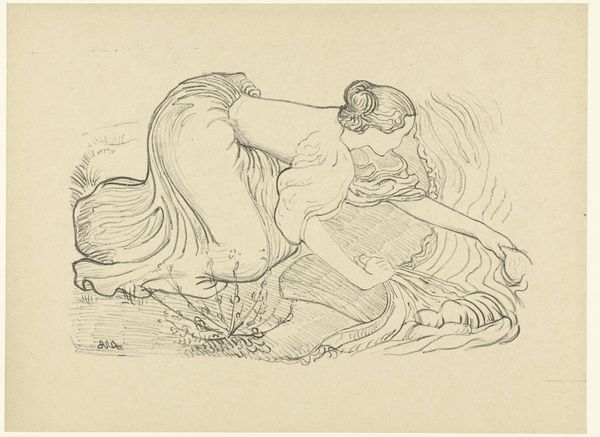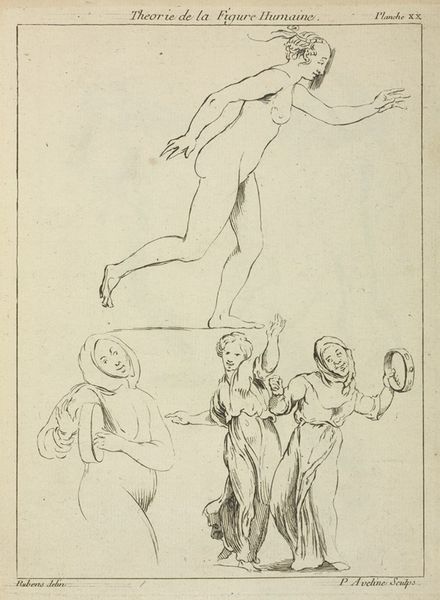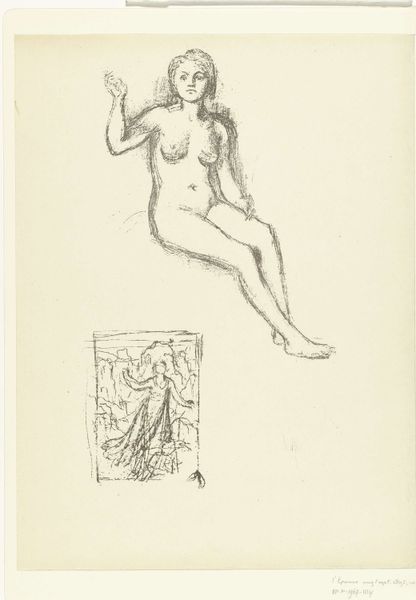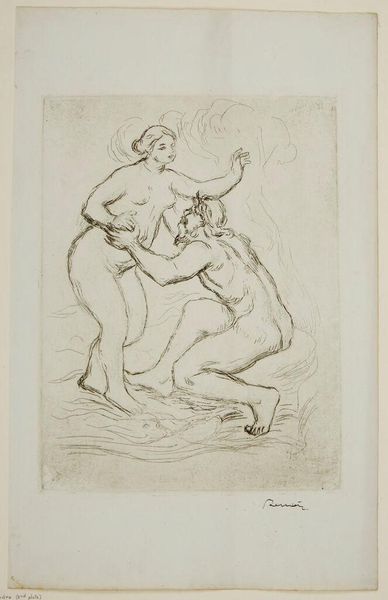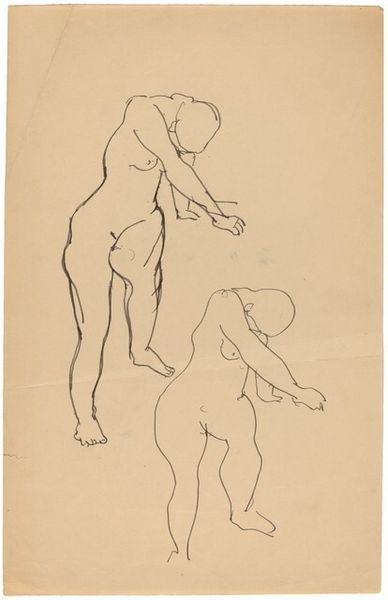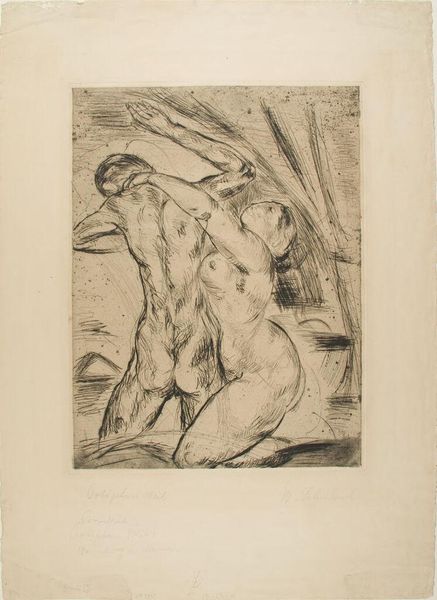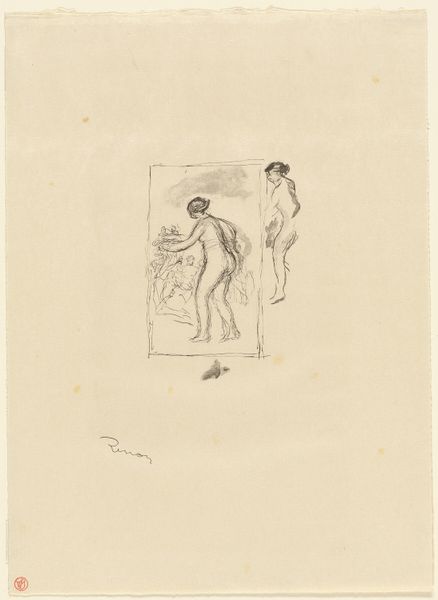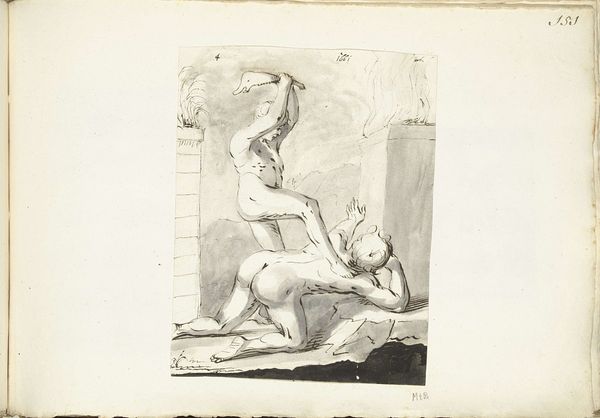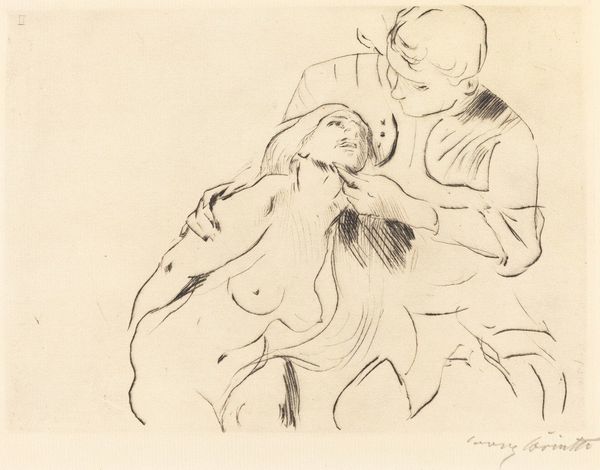
drawing, pencil
#
drawing
#
impressionism
#
pencil sketch
#
figuration
#
pencil
#
nude
Copyright: Public Domain: Artvee
Curator: Before us we have Pierre-Auguste Renoir’s drawing "Le Fleuve Scamandre 1er". It appears to be a pencil sketch. Editor: It feels unfinished, like a fleeting impression caught mid-thought. There's a certain vulnerability to its simplicity, a raw, unadorned quality. Curator: Indeed, that's quite characteristic of Impressionist studies. Renoir captures a moment with minimal strokes. Looking at the figures, particularly their positioning, how does that strike you? Editor: Well, there is this one figure, supporting another—a vulnerable stance—or, she may be beckoning someone or something in the distance, perhaps in an offering. I wonder what narrative context Renoir intends to imply, as well. We are in a society and period where the nude in art was laden with symbolism and often justified with historical or mythological references, of course. Curator: Precisely. Scamander, or "Scamandros," was a river god of Greek mythology, a river near Troy. The name, I think, evokes classical allegories. The sketch invites contemplation on such classical artistic precedents. Editor: So, it’s interesting how Renoir links this impressionistic style with those deeply rooted art-historical themes. It raises questions, though: Is it referencing these symbolic precedents or reacting against them, by modernizing it, stripping it down? Curator: That ambiguity, I believe, is its strength. It uses a classical reference as a starting point for his own experimentation in rendering motion and form, capturing a sensory impression more than a story. It suggests themes of beauty in the human form without relying on elaborate symbolism or storytelling. It challenges the academic, whilst referring to a god of the era, almost poking fun. Editor: It’s a fascinating glimpse into his artistic process, highlighting the constant conversation between tradition and innovation within the Impressionist movement. The tension that arises with Renoir, always navigating the classical with modern impulses! It offers a view to understand this historical dialogue, which I appreciate. Curator: Yes, examining “Le Fleuve Scamandre 1er” from a historical and symbolic lens allows us to better appreciate Renoir’s complex negotiations of artistic conventions, or not, at the time. Editor: Exactly, by looking at Renoir, in these historical circumstances, maybe we are better placed to reflect on the meaning and trajectory that Impressionism offers to modern art overall. Thank you.
Comments
No comments
Be the first to comment and join the conversation on the ultimate creative platform.


